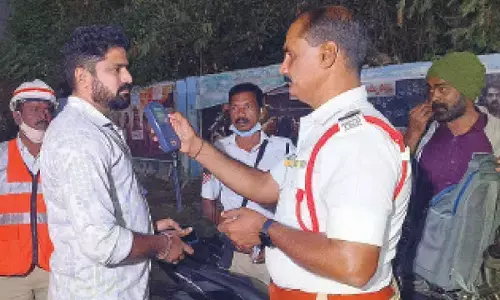OBC population in UP may be over 50%
Share :

After the Bihar census report, backward politics in Uttar Pradesh is also taking the centre stage, and back into focus is the data of the Hukum Singh committee that was set up by the state government in 2001.
Lucknow: After the Bihar census report, backward politics in Uttar Pradesh is also taking the centre stage, and back into focus is the data of the Hukum Singh committee that was set up by the state government in 2001.
According to the report, other backward classes (OBCs) in Uttar Pradesh are estimated to be over 50 per cent of the state’s total population.
Among the key OBC castes, Yadavs are the biggest with 19.40 per cent share and Kurmis and Patels in second place with 7.4 per cent, according to the same data.
While Nishads, Mallahs and Kevats constitute 4.3 per cent , Bhars and Rajbhars are 2.4 per cent, Lodhs 4.8 per cent and Jats 3.6 per cent of the total OBC population.
Though no authentic data of a caste wise break of the OBC population was available after the 1931 Census, Uttar Pradesh’s then minister for parliamentary affairs Hukum Singh-led committee in 2001 and had worked out 7.56 crore as the population of 79 OBCs in the state, based on family registers (maintained in rural areas).
If an average of 20.78 per cent of the population living in the urban areas is also considered, OBC population then may have been over 50 per cent of the state’s 2001 census population of 16.61 crore.
The Hukum Singh committee had brought into focus issues of reservation for most backward classes (MBCs) within the 27 per cent reservation given to the OBCs following implementation of Mandal Commission report.
Prashant Trivedi, associate professor at Giri Institute of Development Studies, Lucknow, said, “Based on the Mandal Commission and Hukum Singh committee’s reports, the possibility of more than 50 per cent share of the OBCs in state’s population cannot be denied.”
The Mandal Commission indicated that the OBC population was 52.2 per cent in the country, he said.
As the politics over the MBCs gained momentum, the Yogi Adityanath government, in 2018, decided to set up another social justice committee headed by Justice Raghvendra Kumar in the backdrop of demand for quota for MBCs within the quota for the OBCs.
Justice Raghvendra Kumar committee submitted its nearly 400-page report in October 2018. The committee classified the OBCs into three categories of backward classes, more backward classes and most backward classes.
BJP’s allies -- Suheldev Bhartiya Samaj Party (SBSP) , Apna Dal and Nishad party -- are now expected to seek a larger share for themselves in the upcoming general elections.
For its part, INDIA bloc, the alliance of opposition parties, has supported the demand for a caste census. Samajwadi Party chief Akhilesh Yadav, in a post on X, said the BJP government should leave politics and conduct a nationwide caste census.
Uttar Pradesh Congress Committee organisation secretary Anil Yadav said the Bihar caste census report would expose the BJP’s attempts to divert focus and dilute the demand for a caste census.















